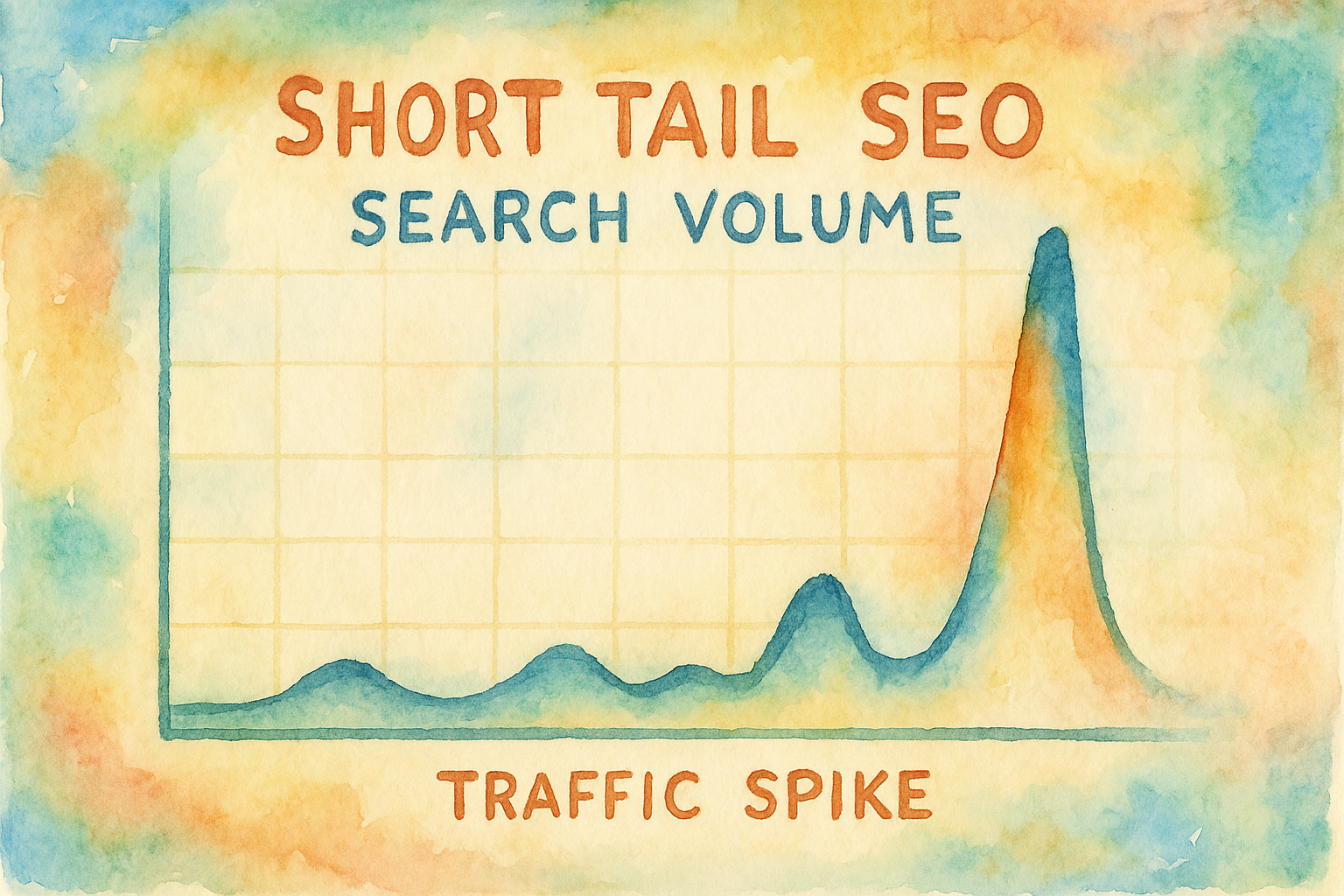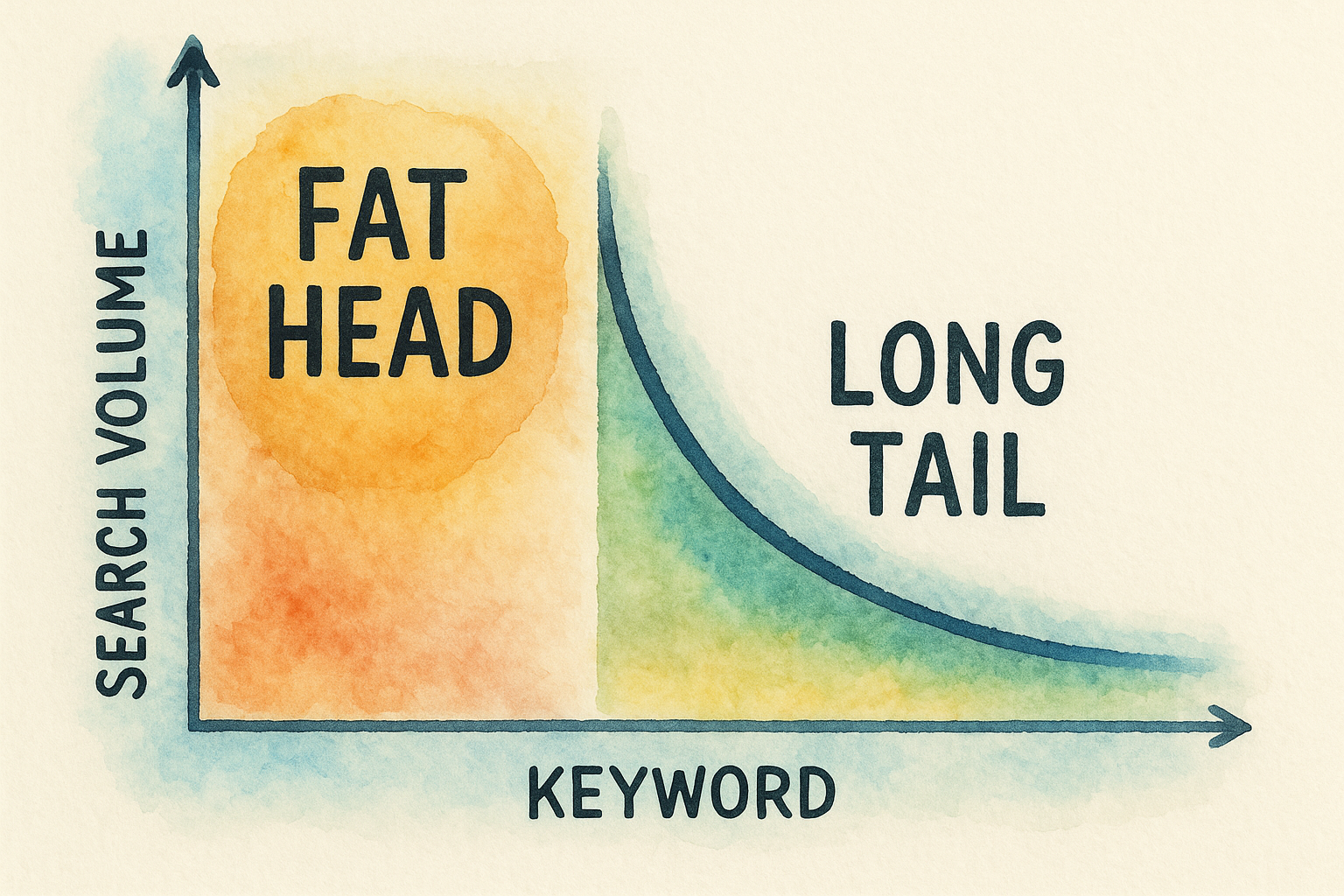Short tail keywords drive massive traffic in SEO.
But what are they, exactly?
In this guide, you'll get a complete cheatsheet to mastering short tail SEO for high-volume rankings and growth.
Some are the cornerstone of brand visibility.
Some demand fierce competition strategies.
Some pair perfectly with long-tail and medium-tail tactics.
Some require deep technical finesse.
Some unlock explosive traffic gains in days.
Let's dive right in.
What Is Short Tail SEO?
Short tail SEO focuses on one- or two-word keywords with broad search intent.
They’re often called head terms.
Think “SEO,” “shoes,” or “insurance.”
These terms represent high search volume but come with heavy competition.
Ranking for “SEO” can drive tens of thousands of visits monthly but demands significant authority and investment.
In contrast, long-tail phrases like “best SEO practices for small businesses” see lower volume but higher conversion rates.
Short tail SEO remains critical for brand awareness, top-of-funnel growth, and capturing broad audiences.

Short Tail vs Long Tail Keywords
Short tail keywords are 1–2 words; long tail keywords are 3+ words.
They sit on opposite ends of the search demand curve.
Short tail occupies the “fat head”—high volume, broad intent. Source
Long tail sits in the tail—lower volume, specific intent, higher conversion.
- Volume: Short tail can exceed 50,000 monthly searches; long tail often under 1,000.
- Competition: Short tail is fiercely competitive; long tail offers easier entry points.
- Intent: Short tail captures awareness; long tail captures transactional or informational needs.
But they work best together: use head terms for visibility and long tail for conversions.

Why Short Tail SEO Matters
Short tail terms shape your brand authority.
They build trust with both users and search engines.
They signal topical relevance to Google’s algorithms.
Ranking for a head term like “marketing” can skyrocket organic traffic in weeks.
It also unlocks featured snippets and authoritative placements.
However, it often takes months or years of quality content and backlinks.
Conducting Short Tail Keyword Research
Effective research starts with the right tools and data-driven insights.
- Google Keyword Planner (free with Google Ads).
- Ahrefs Keywords Explorer for volume and difficulty metrics.
- SEMrush for competitive gap analysis.
- Ubersuggest and Google Autocomplete for related head terms.
Embed our quick tutorial video on long-tail research—similar techniques apply to head terms:
Start with your seed term—enter “SEO,” “insurance,” or “shoes.”
Filter by monthly search volume and keyword difficulty.
Prioritize terms with a balance of high volume and manageable difficulty.
Not all head terms are worth chasing—a term with 100,000+ volume but 90+ difficulty may be impractical.
Instead, find head terms with 30–60 difficulty scores for realistic early wins.
For deeper tool comparisons, check our best keyword research tools guide.

On-Page Optimization for Short Tail Keywords
On-page factors signal relevance for head terms.
- Title Tag: Place the short tail keyword near the start. E.g., “Short Tail SEO: Ultimate Guide.”
- Meta Description: Summarize benefits and include the term naturally (120–160 chars).
- Header Tags: Use
<h1>for your page title,<h2>for subtopics—sprinkle the head term. - Content Placement: Include the head term in the first 100 words; maintain a natural flow at 1–2% density.
- Image Alt Text: Describe images with the head term. E.g., “Graph showing short tail SEO volume.”
- URL Structure: Keep it concise:
/short-tail-seo-guide/.
Example snippet optimized for “short tail seo”:
<title>Short Tail SEO: Ultimate Guide to Head Terms</title> <meta name="description" content="Master short tail seo with expert tips on keyword research, on-page best practices, and technical optimization for high-volume traffic.">
Off-Page and Technical SEO Considerations
Off-page signals prove your site’s authority for competitive head terms.
- Quality Backlinks: Acquire links from authoritative domains. Diversify anchor text with exact-match, partial-match, and branded links.
- Digital PR & HARO: Use expert quotes and press releases to earn high-value features.
- Site Speed: Optimize images, minify CSS/JS, and leverage browser caching for lightning-fast load times.
- Mobile Usability: Ensure responsive design and mobile-friendly layouts. Use Google PageSpeed Insights to audit.
- Indexation: Audit your XML sitemap and robots.txt to include head-term landing pages.

Measuring Success: KPIs & Analytics
Track your short tail SEO performance with these metrics:
- Keyword Rankings: Monitor head-term positions in Google Search Console.
- Organic Sessions: Use Google Analytics to measure traffic lifts.
- Click-Through Rate (CTR): Improve SERP snippets to boost clicks.
- Bounce Rate & Dwell Time: Ensure your content engages users.
- Conversions: Set up goals to capture leads or sales from head-term visits.
Tools like GA4, Search Console, and third-party platforms help you refine strategies based on real-time data.
Common Pitfalls to Avoid
Many SEOs make these mistakes with head terms:
- Keyword Stuffing: Overusing the head term harms readability and may trigger penalties. Source
- Ignoring Intent: Broad terms can signal varied intents. Tailor content for predominant informational or transactional goals.
- Neglecting Page Structure: Skipping optimized titles, headers, or clean URLs undermines your relevance signals.
- Lack of Backlink Diversity: Relying only on exact-match anchors looks spammy. Diversify fully.
- Outdated Content: Quarterly audits are crucial. Refresh head-term pages with new insights and data.
Advanced Strategies & Best Practices
Combine head terms with related modifiers and semantic variations.
Use Latent Semantic Indexing (LSI) to incorporate synonyms and related entities.
Group content around topic clusters: a pillar page targeting “SEO” and supporting pages for “SEO best practices,” “SEO pricing,” and “SEO trends.”
Leverage medium tail keywords as a bridge between short and long tails.
Implement structured data (schema) to qualify for rich results on head-term queries.
Optimize for voice search by adding conversational FAQs and question-based headings.
Case Studies & Real-World Examples
E-commerce Success Story
An online retailer targeted the head term “running shoes.”
They optimized category pages, built backlinks from fitness blogs, and improved mobile UX.
Within six months, organic traffic rose by 75% and sales by 40%.
Travel Blog Implementation
A travel site focused on the short tail “travel tips.”
They created a comprehensive pillar page and internal links to niche articles like “budget travel tips” and “solo travel safety tips.”
After a year, they secured top-three rankings for “travel tips,” doubling monthly visitors.
The Future of Short Tail SEO
Voice assistants are shifting queries toward natural language.
Expect head terms to evolve into question-based searches like “What is SEO best practice?”
AI-driven SERP features will highlight concise, authoritative answers.
Continuous adaptation—testing new formats like video snippets and interactive tools—will keep your head-term pages competitive. Source
Conclusion
Mastering short tail SEO unlocks high-volume visibility and brand authority.
By combining rigorous keyword research, on-page excellence, technical best practices, and advanced tactics, you’ll compete for head terms effectively.
Monitor performance, avoid pitfalls, and iterate based on data to sustain growth.
Ready to elevate your SEO? Discover how to choose the best SEO agency or implement these tactics in-house.
FAQ
What qualifies as a short tail keyword?
A short tail keyword is a one- or two-word phrase with broad search volume and high competition, like “SEO” or “shoes.”
How many words make up a short tail keyword?
Typically one to two words; concise by design to capture general interest.
Can I rank using only head terms?
It’s possible but challenging. Pair short tail with long tail and medium tail for balanced growth.
How often should I update my short tail SEO strategy?
Review quarterly. Track algorithm updates, performance data, and industry trends to stay ahead.